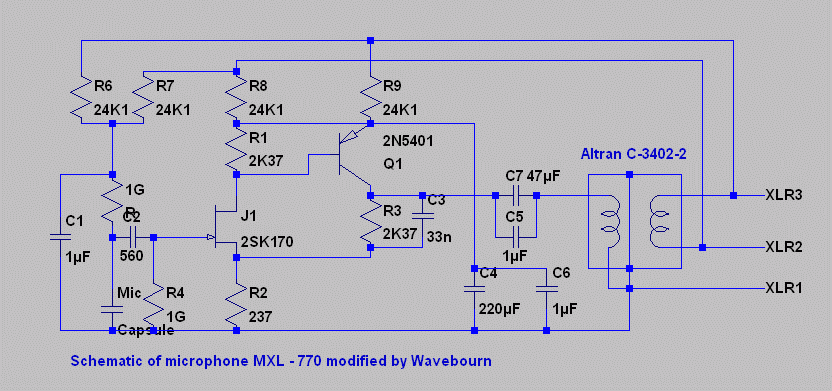[quote author="rodabod"]Bells obiously ring (no pun intended) regarding bright Chinese capsules who's design was influenced by the Neumann capsules. Does anyone know if the Chinese treble rise follows a similar law to the the Neumanns, or are we just stuck with a crap sounding high-end in the first place?[/quote]
Well, that's my entire line of reasoning... Roddy's on the same path.
I have a few Neumann capsules here, and when I wire them to MXL 2001 electronics (for example) they sound too bright. -Not necessarily exactly the same, but similarly bright none the less. Now, comparing a U67 and a U87 with some MXLs in a side-by-side multichannel recording last weekend, it's striking how much more comparable these mics are when a certain amount of HF rolloff is applied to the MXLs.
Even the Scott Dorsey mods don't address the 'de-emphasis' part of the equation, assuming that a comparable amount of 'pre-emphasis' is built in.
Anyone want to host some side-by-side WAV files? -I just set up the mics side-by-side next to each other, and pointed them at different parts of the Brass band during their rehearsal, so I could make multitrack recordings and get a feel for how they respond to different instrument groups. (Trombone, Euphonium, Cornets, horns, tuba etc.)
Interestingly, the '67 capsules sound no less irritatingly bright with Scott Dorsey electronics, OR with the MXL original circuit. Play with a little 1-band EQ in Pro-Tools, and they become rather more like the Neumann 'control' comparisons...
Now of course, close-up vocals will have a proximity effect, and -coupled with the HF rise- that gives you a bright-yet-warm sound. -the "smiley-face-graphic-EQ" type of sound. Recording members of a brass ensemble from 6 feet away (as 'section' spot mics) and there's no proximity effect. The MXLs just sound bright and grating compared to the Neumanns. -Some judicious redress with a single-band HF EQ and things are more readily comparable.
Keith


































